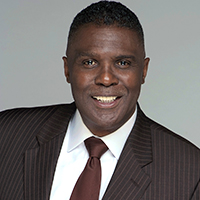
By Glenn Ellis
(Trice Edney Wire) – Have you ever been told by your doctor to reduce the salt in your diet? Every wondered why?
Sodium is key to controlling the amount of fluid in your body. Your body needs it for your brain and muscles to work the right way.
Most people eat too much sodium, often without knowing it. The average American eats about 3,400 mg of sodium a day.
Salt is sodium plus chloride. Both are minerals. Salt is made up of 40% sodium and 60% chloride. It’s that 40% that causes so much concern among doctors today.
Sodium is one of those things that everyone “knows” is unhealthy… kind of like saturated fat. Sodium is known to increase blood pressure, a common risk factor for heart disease and stroke. These are the two most common sources of death in middle- and high income countries!
The more sodium we have in our bloodstream, the more water it binds. For this reason, sodium is thought to increase blood pressure.
If blood pressure is elevated, the heart has to work harder to push the blood throughout the body and there is increased strain on the arteries and various organs.
High blood pressure (hypertension) is a major risk factor for many serious diseases, like heart disease, stroke and kidney failure.
According to the Harvard School of Public Health, in most people, the kidneys have trouble keeping up with the excess sodium in the bloodstream. As sodium accumulates, the body holds onto water to dilute the sodium. This increases both the amount of fluid surrounding cells and the volume of blood in the bloodstream. Increased blood volume means more work for the heart and more pressure on blood vessels. Over time, the extra work and pressure can stiffen blood vessels, leading to high blood pressure, heart attack, and stroke. It can also lead to heart failure. There is also some evidence that too much salt can damage the heart, aorta, and kidneys without increasing blood pressure, and that it may be bad for bones, too.
High blood pressure is a leading cause of cardiovascular disease. It accounts for two-thirds of all strokes and half of heart disease. Most of the sodium in our diets comes from adding it when food is being prepared. Pay attention to food labels, because they tell how much sodium is in food products. For example: foods with 140 mg or less sodium per serving are considered low in sodium. Table salt is sodium chloride. One teaspoon of salt contains about 2,300 mg of sodium.
Sodium is a crucial electrolyte in the body. Many foods contain small amounts of sodium naturally, but most of the sodium in the diet comes from salt. It is an electrically charged molecule, and along with potassium helps maintain electrical gradients across cell membranes, which is critical for nerve transmission, muscular contraction, and various other functions.
This information on sodium, and it relationship to heart disease, stroke, and high blood pressure is of particular importance to African Americans.
These disease processes disproportionately affect African Americans. High blood pressure is the single largest risk factor for cardiovascular disease in African Americans. The “end of the line’ manifestations of high blood pressure are striking and include higher rates of stroke, significantly increased renal disease including end‐stage renal disease requiring dialysis, and a higher risk of heart failure.
I would certainly have to devote and entirely separate column to address the “why’s” as it relates to sodium and African Americans. Theories and hypothesis abound; running the gamut. There are those who point to sodium retention resulting from the captivity of enslaved Africans during the Middle Passage, others look at a specific gene possessed by African Americans as the culprit. Regardless, compared with whites and every other ethnic group in the United States, hypertension in African Americans is not only more prevalent but also starts at a younger age, is more severe, and causes much more organ damage.
There is no question that environmental factors ultimately related to racism (e.g. socioeconomic disadvantage, less access to the best health care) play large roles in causing and sustaining this major public health problem for African Americans. Despite similar African heritage, Africans living in Africa or the West Indies have much less hypertension than African Americans. In parts of rural Africa, hypertension prevalence is very low and blood pressure does not rise with age as it does in all ethnic groups throughout the United States.
Here’s the takeaway… As a rule of thumb, think of the range for sodium intake this way: Don’t go over 2300 mg if you’re a healthy adult, but aim for the lower threshold of 1,5000 mg if you know you suffer from high blood pressure, kidney disease, or diabetes. Older persons should aim for that lower range, too.
If you start noticing swelling in various parts of your body (due to excessive water retention), or a rise in your blood pressure (greater than 120/80), monitor your sodium intake more closely, and see your doctor.
Remember, I’m not a doctor. I just sound like one. Take good care of yourself and live the best life possible!
The information included in this column is for educational purposes only. It is not intended nor implied to be a substitute for professional medical advice. The reader should always consult his or her healthcare provider to determine the appropriateness of the information for their own situation or if they have any questions regarding a medical condition or treatment plan. Glenn Ellis, is a Health Advocacy Communications Specialist.















